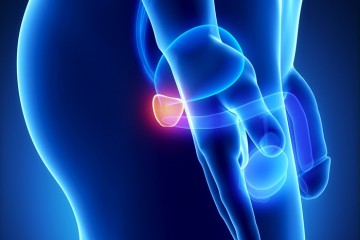Health Articles
Benign prostatic hyperplasia (aka BPH, benign prostatic hypertrophy, or an enlarged prostate) is a condition that most often affects older men. As men get older, the prostate gland naturally becomes enlarged. This can put pressure on the bladder and urethra, causing problems with urination. Over 50 percent of men in their 60s and up to 90 percent of men in their 70s and 80s have some symptoms of an enlarged prostate.
The signs and symptoms of benign prostatic hyperplasia may include a strong urge to urinate, weak urine stream, straining to urinate, inability to urinate, pain with urination, bloody urine, needing to urinate two or more times a night, incomplete emptying of the bladder, and dribbling at the end of urinating. It can be difficult to initially determine whether BPH is the underlying cause of these symptoms because less than half of all men with enlarged prostates experience symptoms.
The risk factors for prostate gland enlargement include aging, family history, ethnic background, diabetes, heart disease, and lifestyle. Aging: Prostate gland enlargement rarely causes signs and symptoms in men younger than age 40. About one-third of men experience moderate to severe symptoms by age 60, and about half do so by age 80. Family history: Having a blood relative, such as a father or brother, with prostate problems means you're more likely to have problems. Ethnic background: Prostate enlargement is less common in Asian men than in white and black men. Black men might experience symptoms at a younger age than white men. Diabetes and heart disease: Studies show that diabetes, as well as heart disease and use of beta blockers, might increase the risk of BPH. Lifestyle: Obesity increases the risk of BPH, while exercise can lower your risk.
The treatment options for BPH include medications such as alpha blockers, 5-alpha reductase inhibitors, combination drug therapy, and Cialis. Surgery is another option and may include either a transurethral resection of the prostate (aka TURP), or a transurethral needle ablation (aka TUNA).
Alpha blockers make urination easier by relaxing the bladder neck muscles and muscle fibers in the prostate. (Examples include Uroxatral, Cardura, Flomax, Rapaflo). 5-alpha reductase inhibitors shrink the prostate by preventing hormonal changes that cause prostate growth. (Examples include Proscar and Avodart. Combination drug therapy involves taking an alpha blocker and a 5-alpha reductase inhibitor in combination if either drug isn't effective alone. Cialis is normally used to treat erectile dysfunction, but may also be used for BPH when also experiencing erectile dysfunction.
A transurethral resection of the prostate reduces symptoms in 80 to 90 percent of patients. Complications may include dry ejaculation, infection or bleeding, erectile dysfunction, and incontinence. Because the prostate can grow back, up to 20 percent of patients require another TURP procedure within ten years. A transurethral needle ablation is a type of procedure that involves passing a scope into the urethra which allows the doctor to place needles into the prostate gland. Radio waves pass through the needles, heating and destroying excess prostate tissue that is blocking urine flow.

